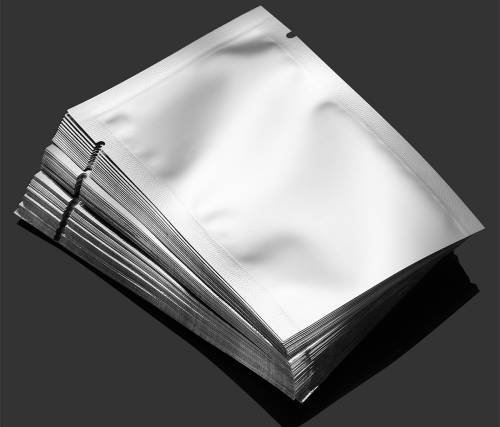The sealing quality of aluminum foil bags directly affects the entire packaging process as well as the transportation and storage of the contents of the package. What are the five common sealing problems? What kind of countermeasures are available? The following will be analyzed one by one.
1. What if the contents leak or deteriorate due to incomplete heat sealing?
Causes:
The heat sealing properties of the composite film are not good, mainly because the resin used for the inner sealing layer is not suitable.
Countermeasures:
Use a film with good anti-pollution heat sealing properties. Generally speaking, LDPE has medium resistance to contamination, EVA has good resistance to contamination when the VA content is high, LDPE also has good resistance to contamination, and ionic resins and metallocene polymers have excellent resistance to contamination.
2. What should I do if the seal is brittle and broken?
Causes:
(1) heat sealing temperature is too high.
(2) too much pressure.
(3) heat sealing time is too long.
(4) The edge of the upper part of the sealer is too sharp or the Teflon cover is damaged.
(5) Silicon rubber in the bottom sealer is too hard.
(6) During the lamination and maturation process, part of the adhesive penetrates inside the film. The substrate is affected by the penetration of the adhesive, the toughness (impact resistance) is reduced and the brittleness is increased.
(7) plastic composite packaging bags in the cooling and placement, heat sealing strength has increased, but also the tendency to become brittle.
Countermeasures:
(1) Select the appropriate processing temperature, pressure and heat sealing time according to the heat sealing characteristics of the material of the inner sealer layer.
(2) Improve the state of the upper part of the heat sealing knife surface to make the sealer surface flat.
(3) Teflon cloth wrapping is intact.
(4) Select suitable hardness of silicone rubber pad.
3. How about the bag warping after heat sealing?
Causes.
(1) The thickness of the composite film is not consistent.
(2) The heat sealing temperature is too high or the heat sealing time is too long.
(3) In the longitudinal heat sealing knife part, the running track of the composite film is not straight.
(4) Insufficient cooling.
(5) Insufficient ripening time.
(6) The heat resistance of the surface substrate film is poor.
(7) Improper control of tension matching of the composite substrate in the compounding process, resulting in residual stress after maturation and shaping, especially when the thickness of the composite film is thin, such failure is more likely to occur.
Countermeasures:
(1) Adjust the floating roller tension.
(2) Choose the inner sealing substrate with low temperature heat sealing property.
(3) Adjust the heat sealing temperature to a suitable temperature.
(4) Sufficient cooling.
(5) Fully ripening.
(6) Re-select the surface substrate film.
(7) adjust the tension of the various parts of the composite processing equipment, as far as possible to make the two kinds of composite substrate shrinkage rate equal.
4. How to do if the outer contour of the heat seal surface is not clear? (Knife pattern is not clear).
Causes:
(1) Short cooling time.
(2) Poor contact of cooling plate.
(3) The silicone pad is heated, making the edge partly melted.
(4) Longitudinal heat sealing force is not flat across.
(5) The edge of heat sealing knife is not neat and blunt.
Countermeasures:
(1) Adjust the cooling time.
(2) Adjust the cooling plate.
(3) Replace or adjust the heat sealing knife.
(4) Prevent the melting of the edge caused by overheating of the silicone pad.
5. How to do with poor heat seal strength
Causes:
(1) The adhesive in the composite film has not been fully hardened.
(2) Heat sealing conditions are not appropriate.
(3) The distance between the heat sealing knife and the cooling knife is too long.
(4) Faulty inner sealer film.
(5) Poor heat sealability of the ink, resulting in reduced lamination strength of the film in the heat seal area.
(6) Dust, spray powder and other substances adhering to the heat seal cover.
(7) Low compound strength of aluminium foil bags or excessive reduction of compound strength at the heat seal.
Countermeasures:
(1) Promote hardening of the adhesive (ripening, curing) through heat preservation and ageing to improve the composite strength and heat resistance of the composite film.
(2) Choose the best heat sealing conditions (temperature, time and pressure) according to the composition and structure of the composite film and the heat sealing state, or improve the heat sealing method and cool it immediately after heat sealing.
(3) Check the shelf life and storage conditions of the heat seal layer film, paying special attention if the heat seal layer uses old batch numbers and heat seal treated film.
(4) Increase the thickness of the heat seal layer film.
(5) Change the type and grade of the heat sealer film and use an inner sealer film that is resistant to contamination.
(6) Check that the grade of the adhesive meets the requirements (exudation of low molecular substances from the resin can sometimes have an effect on the composition of the adhesive).
(7) Improve the heat sealing performance of the heat sealing layer (substrate), control the content of the slip agent and use LLDPE film.
(8) Control the monomer content of MDI in the laminating adhesive binder.
(9) Check the degree of treatment of the heat cover.
(10) Change the ink (preferably with two-liquid type ink).
(11) Change the printing pattern of the foil bag so that the part printed with ink avoids the heat sealing part, or change the heat sealing method. (Pay special attention to the metal ink not to be printed on the sealing area).


